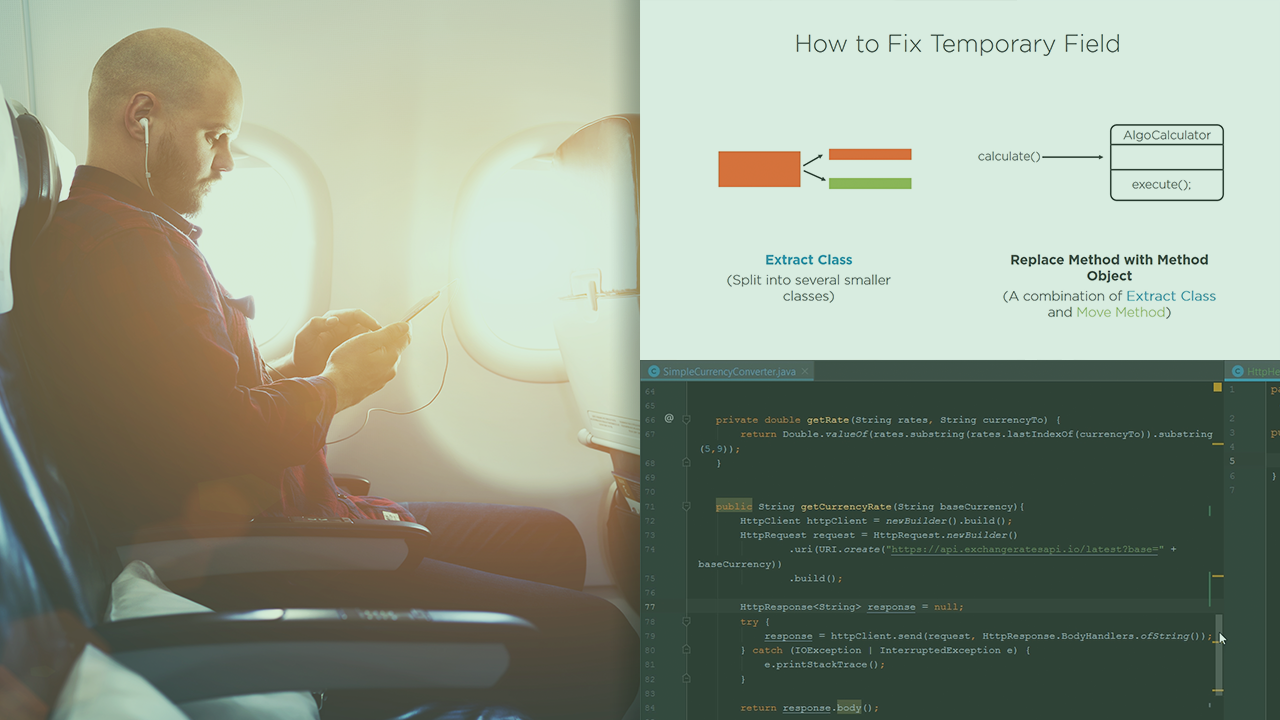- Course
Java Refactoring: Best Practices
Frustrated or slowed down by messy code? Don't wait for someone else to clean it up - learn how to refactor and do it yourself! This course will walk you through what you need to know for refactoring.

- Course
Java Refactoring: Best Practices
Frustrated or slowed down by messy code? Don't wait for someone else to clean it up - learn how to refactor and do it yourself! This course will walk you through what you need to know for refactoring.
Get started today
Access this course and other top-rated tech content with one of our business plans.
Try this course for free
Access this course and other top-rated tech content with one of our individual plans.
This course is included in the libraries shown below:
- Core Tech
What you'll learn
Technical debt grows with the size of any software project. Without refactoring it will eventually fail, thus refactoring may be considered an essential skill of any professional software engineer.
In this course, Java Refactoring: Best Practices, you will learn how to efficiently refactor and produce cleaner software. First, you will see what code smells are, and why they are bad for your codebase. Then, you will explore how to recognize and refactor them using a variety of techniques to achieve cleaner and more maintainable code. Finally, you will discover the most important principles that apply to refactoring and clean code.
By the end of this course, you will have the necessary skills to convert a mess into flexible and robust software, one line at a time.

